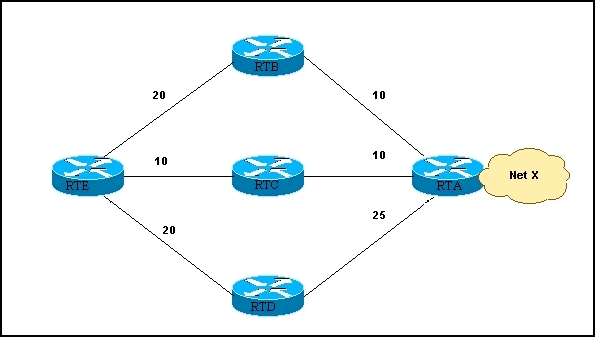READ Free Dumps For Cisco- 300-101
| Question ID 18387 | A network administrator recently redistributed RIP routes into an OSPF domain. However,
What must the administrator do to accomplish this? |
| Option A | Configure summarization on R1 with area 1 range 172.16.32.0 255.255.224.0 |
| Option B | Configure summarization on R1 with summary-address 172.16.32.0 255.255.224.0 |
| Option C | Configure area 1 as a stub area with area 1 stub |
| Option D | Configure area 1 as a NSSA area with area 1 stub nssa |
| Option F | Answer : B Explanation: In many cases, the router doesn't even need specific routes to each and every subnet (for example, 172.16.1.0/24). It would be just as happy if it knew how to get to the major network (for example, 172.16.0.0/16) and let another router take it from there. In our telephone network example, the local telephone switch should only need to know to route a phone call to the switch for the called area code. Similarly, a router's ability to take a group of subnetworks and summarize them as one network (in other words, one advertisement) is called route summarization. Besides reducing the number of routing entries that a router must keep track of, route summarization can also help protect an external router from making multiple changes to its routing table due to instability within a particular subnet. For example, let's say that we were working on a router that connected to 172.16.2.0/24. As we were working on the router, we rebooted it several times. If we were not summarizing our routes, an external router would see each time 172.16.2.0/24 went away and came back. Each time, it would have to modify its own routing table. However, if our external router were receiving only a summary route (i.e., 172.16.0.0/16), then it wouldn't have to be concerned with our work on one particular subnet. This is especially a problem for EIGRP, which can create stuck in active (SIA) routes that can lead to a network melt-down. Summarization Example We have the following networks that we want to advertise as a single summary route: * 172.16.100.0/24 * 172.16.101.0/24 * 172.16.102.0/24 * 172.16.103.0/24 * 172.16.104.0/24 * 172.16.105.0/24 * 172.16.106.0/24 |
| Correct Answer | F |
| Question ID 18388 | Observe the exhibit.
If the command variance 3 were added to RTE, which path or paths would be chosen to |
| Option A | E-B-A |
| Option B | E-B-A and E-C-A |
| Option C | E-C-A and E-D-A |
| Option D | E-B-A, E-C-A and E-D-A |
| Correct Answer | B |

